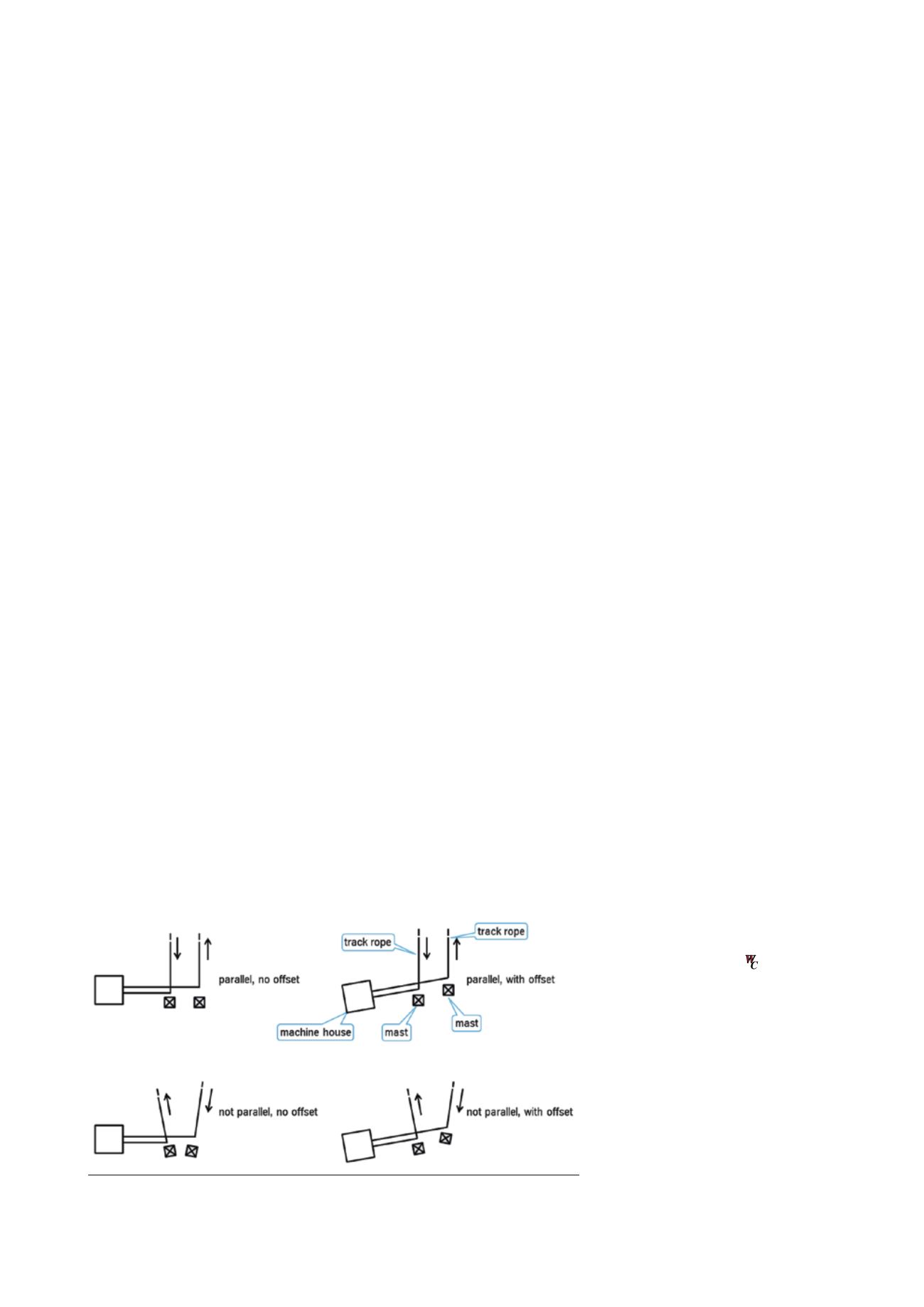
large mine trucks via a special bin
station with apron conveyor discharge.
This conveying system requires stable
ground and there should be no danger
of earthquakes and landslides. If there is
already a semi-mobile crusher station at
the pit bottom or on an intermediate
level, a third steep-angle conveying
option could be advantageous.
Together with the German companies
Continental and Siemens, thyssenkrupp
is currently developing a continuous
steep-angle conveyor, based on pipe
conveyor technology, which can transport
precrushed ore or minerals from depths
of 200 – 700 m up a 30 – 45˚ slope at rates
of up to 5000 tph. The s–shaped track is
located in the slope by means of a steel
structure. The pipe belt conveyor has an
inside dia. of 900 mm. The centre of the
belt has a chevron pattern that prevents
bulk material and individual lumps up to
roughly 350 mm edge length from sliding
back at such a steep conveying angle.
After material transfer at the pit rim,
onward transportation is by means of
conventional overland conveyors with
troughed belts. Details of the design of
this conveyor system are provided in a
publication.
2
Advantages of the new
system
Returning to the tk Skip Way System,
the advantages of the system for
handling rates up to 2000 tph and
maximum truck payloads of 60 t are
summarised below:
n
n
Reduction of haulage costs in
quarries and in smaller but deep
opencast mines.
n
n
Reduced operating and manpower
costs.
n
n
Reduced CAPEX and OPEX over
the life of the mine.
n
n
Reduced expense for building and
maintaining roads in and out of
the mine.
n
n
Single-lane roads – instead of
two-lane roads to allow two-way
traffic – are sufficient and permit
steeper slopes and therefore
either higher recovery of valuable
minerals or less removal of
overburden.
n
n
Can also be used in very rough
weather conditions when truck
haulage might have to be
suspended (fog, snow, ice and
rain).
n
n
Use of the system provides a
significant reduction in noise,
dust and CO
2
compared with
truck haulage and could help in
retaining mine operating licenses.
n
n
The system lends itself very well
to partial or full automation.
n
n
The tk Skip Way System can also
be employed in earthquake-prone
regions or mines with unstable
slopes, as the rope support masts
are located off the mine slope and
are anchored flexibly in ground
foundations using pins. From the
mine bottom to the unloading
station at the top, no further
support structures for the track
and travel ropes are required.
n
n
Existing pit slopes do not generally
need to be adapted for subsequent
installation of the system, nor is
it necessary to relocate existing
access roads into the mine.
n
n
The system allows the reloading
of trucks in the case of overburden
(truck-to-truck operation) or the
parallel charging of a crusher and
processing station in the case of
valuable minerals (truck-to-crusher
operation).
n
n
As mining progresses, the bottom
station can also be relocated to
greater depths as the necessary
additional rope lengths are stored
at the anchorage points when the
system is first installed.
n
n
The entire system, including
loading, unloading and drive
stations, can also be relocated as
soon as new anchorage points
have been concreted in the mine.
n
n
If the system is used to feed a
crusher station at the mine rim,
mine trucks from other mines or
higher mining areas in the same
mine can also use the crusher’s bin
feed system. This provides further
redundancy during inspection and
maintenance of the skip system.
Conclusion
The thyssenkrupp Skip Way System is
a cost-effective and eco-friendly
steep-angle conveying technology that
can be easliy integrated into existing
steep opencast mines or quarries.
Many mine operators using truck
haulage will face increasing
production costs as their mines get
deeper. The new steep-angle
conveying system now offers a
cost-effective alternative to truck
haulage. Obviously, such a steep-angle
conveying system will need to be
adapted to the conditions of an
existing mine and the technical and
financial aspects (CAPEX/OPEX) will
need to be clarified in advance – jointly
with the mine operator.
References
1. WOLPERS, F., ‘Skip-Conveying in
Opencast Mines - TKF’s Technology
Approach to Optimize the Cost and
Energy Efficiency in Hard Rock Mines’,
presentation given at BulkSolids Europe
Conference (2012).
2. MINKIN, A., BÖRSTING, P. and
BECKER, N., ‘A New Technology for
Steep Incline High Capacity Open Pit
Conveying: the Chevron MegaPipe
Conveyor by ContiTech, thyssenkrupp
and Siemens’, presentation given at
BulkSolids Europe Conference (2012).
Figure 8. Flexible layouts of unloading and loading stations and arrangement of drive station.
38
|
World Coal
|
March 2016


